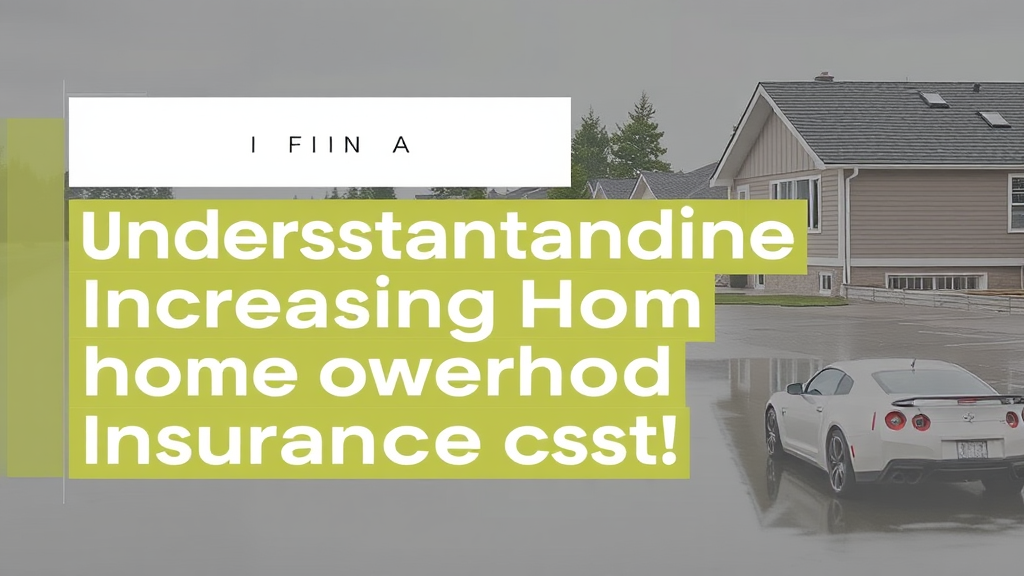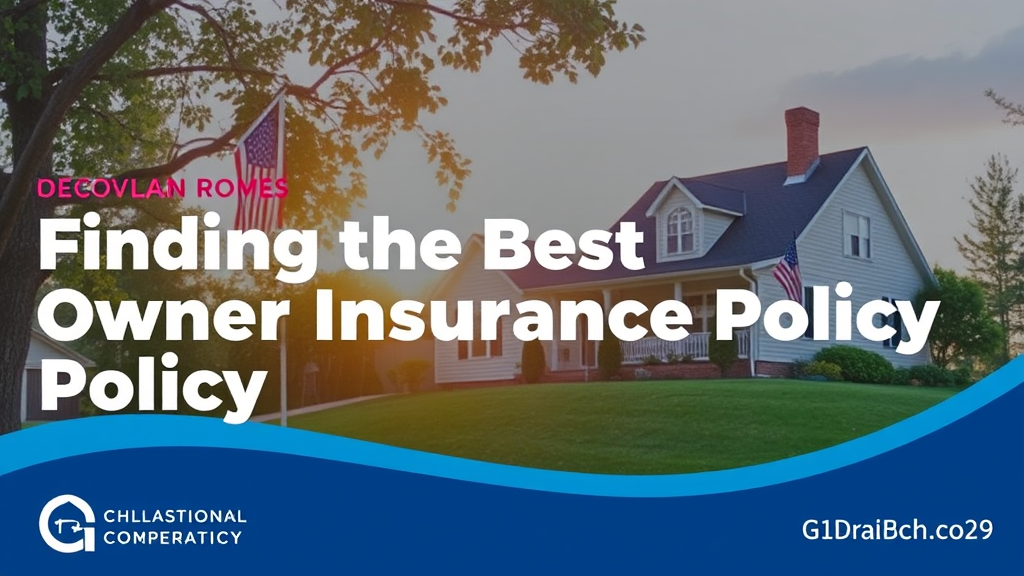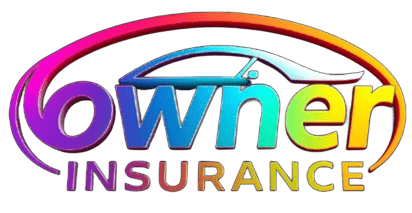Homeownership in the United States represents a significant financial and emotional investment. Protecting this investment is paramount, and for most Americans, that protection comes in the form of home owners insurance.
However, the landscape of home owners insurance is constantly evolving, presenting new challenges and considerations for property owners across the nation. As we move further into 2025, understanding these shifts is crucial for securing adequate coverage and managing costs effectively.
This comprehensive guide aims to provide a detailed overview of home owners insurance in the USA, focusing on the latest trends, cost implications, and strategies for homeowners to navigate this complex market. We will delve into the factors driving premium increases, explore the different types of coverage available, and offer actionable advice on how to find the best policies while optimizing for savings. Our insights are grounded in recent data and expert analysis, ensuring that you receive the most accurate and up-to-date information to make informed decisions about your home’s protection.
The Rising Tides: Understanding Increasing Home Owners Insurance Costs

The cost of home owners insurance has been on a significant upward trajectory in recent years, a trend that continues into 2025. This escalation is not uniform across the country, with certain regions experiencing far more dramatic increases than others. Several key factors contribute to this phenomenon, primarily driven by the increasing frequency and severity of climate-related events, as highlighted by a recent U.S. Department of the Treasury report.
Climate Change: A Major Catalyst for Premium Hikes
The U.S. Department of the Treasury’s Federal Insurance Office (FIO) reported on January 16, 2025, that homeowners insurance costs are rising rapidly, and availability is declining due to climate-related events. The report, based on comprehensive data from over 330 insurers and 246 million policies between 2018 and 2022, revealed alarming trends:
“Average homeowners insurance premiums per policy increased 8.7 percent faster than the rate of inflation in 2018-2022, according to the data analyzed. Some consumers faced substantially larger premium increases than the national average.”
This indicates a systemic issue where the financial burden of natural disasters is increasingly being passed on to policyholders. Areas most vulnerable to climate risks, such as those prone to wildfires, hurricanes, and severe storms, are experiencing the brunt of these increases. For instance, the FIO report noted that consumers in the 20 percent of ZIP Codes with the highest expected annual losses from climate-related perils paid 82 percent more in premiums than those in the lowest climate-risk ZIP Codes. This disparity underscores the direct correlation between environmental risks and insurance affordability.
Economic Factors and Market Dynamics
Beyond climate change, several economic factors are also contributing to the rising costs of home owners insurance:
- Inflation: The general rise in the cost of goods and services impacts the cost of rebuilding homes and replacing damaged property. Construction materials, labor, and repair services have all seen significant price increases, directly affecting the payouts insurers must make on claims.
- Supply Chain Issues: Disruptions in global supply chains can delay repairs and increase the cost of materials, further exacerbating the financial strain on insurers.
- Reinsurance Costs: Insurers themselves purchase reinsurance to protect against large losses. As climate-related claims increase, the cost of reinsurance rises, which is then passed on to consumers through higher premiums.
- Decreased Availability: In high-risk areas, some insurers are reducing their coverage or even withdrawing from the market entirely, leading to fewer options and higher prices for homeowners. The FIO report noted an 80% higher nonrenewal rate in high-risk ZIP codes, indicating decreasing availability.
According to Bankrate’s analysis (July 2025), the national average cost of home owners insurance is approximately 2,466peryearfor2,466 per year for 300,000 in dwelling coverage. However, this national average masks significant variations by state and even by city. For example, Florida has the highest rates due to hurricane and flood risks, while other states like California are seeing significant increases due to wildfires.
These regional differences are often tied to the prevalence of specific natural disasters and local building codes.
Understanding Your Home Owners Insurance Coverage: What’s Covered and What’s Not?
Navigating the intricacies of home owners insurance policies can be daunting, but understanding the different types of coverage is essential for ensuring your most valuable asset is adequately protected. A standard home owners insurance policy typically comprises several key components, each designed to cover specific aspects of your property and liabilities. It’s crucial to remember that while these policies offer broad protection, certain perils are often excluded, necessitating additional coverage.
Key Components of a Standard Home Owners Insurance Policy
Most home owners insurance policies are structured around the following core coverages:
- Dwelling Coverage (Coverage A): This is the primary component, protecting the physical structure of your home, including the roof, walls, foundation, and built-in appliances, against covered perils. The amount of dwelling coverage should ideally reflect the cost to rebuild your home from the ground up, not its market value. Factors like the size of your house, construction materials, and local building codes influence this cost.
- Other Structures Coverage (Coverage B): This extends protection to structures on your property that are not attached to your main dwelling, such as detached garages, sheds, fences, and gazebos. Typically, this coverage is set at a percentage (e.g., 10%) of your dwelling coverage.
- Personal Property Coverage (Coverage C): This covers your personal belongings, including furniture, clothing, electronics, and other valuables, whether they are inside your home or temporarily elsewhere in the world. This coverage can be based on either the actual cash value (depreciated value) or replacement cost (cost to buy new) of your items. Opting for replacement cost coverage provides more comprehensive protection but comes at a higher premium.
- Loss of Use Coverage (Coverage D): Also known as additional living expenses, this coverage helps with the costs of living elsewhere if your home becomes uninhabitable due to a covered loss. This can include hotel stays, meals, and other necessary expenses incurred while your home is being repaired or rebuilt.
- Personal Liability Coverage (Coverage E): This protects you financially if someone is injured on your property and you are found legally responsible. It also covers damage you or your family members accidentally cause to someone else’s property. This coverage can help pay for medical bills, legal fees, and settlement costs.
- Medical Payments to Others (Coverage F): This provides a limited amount of coverage for medical expenses if someone is injured on your property, regardless of who is at fault. It’s designed to cover minor injuries and can help prevent liability claims.
Common Exclusions and Additional Coverages
While standard home owners insurance policies offer robust protection, it’s equally important to be aware of what they typically do not cover. The most common exclusions include:
- Flooding: Damage from floods is almost universally excluded from standard home owners insurance policies. Homeowners in flood-prone areas must purchase a separate flood insurance policy, often available through the National Flood Insurance Program (NFIP).
- Earthquakes: Similar to floods, earthquake damage is not covered by standard policies and requires a separate earthquake insurance policy.
- Maintenance Issues: Damage resulting from a lack of maintenance, such as mold, pest infestations, or wear and tear, is generally not covered. Insurers expect homeowners to maintain their property to prevent such issues.
- Sewer Backups: Damage caused by water backing up from sewers or drains is often excluded and may require an endorsement or separate policy.
- Power Outages: While damage caused by a power outage (e.g., spoiled food due to a refrigerator failure) might be covered, the loss of power itself is not.
To bridge these coverage gaps, homeowners can often purchase endorsements or separate policies. For instance, if you own valuable jewelry, art, or collectibles, you might need a scheduled personal property endorsement to ensure they are fully covered. Similarly, for homes in areas susceptible to specific perils not covered by standard policies, such as sinkholes or landslides, specialized coverage may be available.
Understanding these nuances is vital for any homeowner. Regularly reviewing your policy with your insurance provider and assessing your specific risks can help ensure you have the right home owners insurance coverage for your needs. This proactive approach can prevent significant financial setbacks in the event of an unforeseen disaster.
Finding the Best Home Owners Insurance Policy and Maximizing Your Savings

With the rising costs and complexities of home owners insurance, finding the right policy at an affordable price has become a top priority for many American homeowners. The key to securing optimal coverage without overpaying lies in a combination of diligent research, strategic shopping, and proactive risk management. Here, we explore effective strategies to help you navigate the market and maximize your savings on home owners insurance.
Shop Around and Compare Quotes
One of the most effective ways to find competitive rates is to shop around and compare quotes from multiple insurance providers. Do not settle for the first quote you receive, as prices for similar coverage can vary significantly between companies. Forbes Advisor, in its analysis of best homeowners insurance companies, emphasizes the importance of comparing quotes to find the best fit for individual needs.
When comparing quotes, ensure you are comparing policies with similar coverage limits, deductibles, and endorsements. A lower premium might indicate less comprehensive coverage, which could leave you vulnerable in the event of a claim. Consider working with an independent insurance agent who can provide quotes from various carriers and help you understand the nuances of each policy.
Understand and Adjust Your Deductible
The deductible is the amount of money you pay out-of-pocket before your home owners insurance policy begins to cover the costs of a claim. Generally, choosing a higher deductible will result in a lower annual premium. However, it’s crucial to select a deductible amount that you can comfortably afford to pay in the event of a loss. For example, increasing your deductible from 500to500 to 1,000 could significantly reduce your premium, but you must be prepared to cover that initial $1,000 if you file a claim.
Bundle Your Policies
Many insurance companies offer discounts if you purchase multiple policies from them, such as bundling your home owners insurance with your auto insurance. This ‘multi-policy’ discount can lead to substantial savings. Inquire about such bundling options when obtaining quotes.
Improve Home Security and Safety
Investing in home security and safety features can not only protect your property but also lead to discounts on your home owners insurance premiums. Insurers often offer discounts for:
- Security Systems: Monitored burglar and fire alarm systems.
- Fire Safety: Smoke detectors, fire extinguishers, and sprinkler systems.
- Storm Shutters: Especially in hurricane-prone areas.
- Reinforced Roofs: Upgrades that make your roof more resistant to wind and hail damage.
Consult with your insurance provider to understand which specific improvements qualify for discounts.
Maintain a Good Credit Score
In many states, insurance companies use credit-based insurance scores to help determine premiums. A higher credit score often indicates a lower risk to insurers, potentially leading to lower home owners insurance rates. Maintaining a good credit history by paying bills on time and managing debt responsibly can positively impact your insurance costs.
Review Your Policy Annually
Your home owners insurance needs can change over time. It’s advisable to review your policy annually with your insurance agent to ensure your coverage is still adequate and that you are taking advantage of all available discounts. Life events such as home renovations, significant purchases, or changes in family status can all impact your insurance requirements.
Consider the Age and Location of Your Home
As noted earlier, the age and location of your home significantly influence home owners insurance costs. Older homes may have outdated systems (plumbing, electrical) that are more prone to issues and more expensive to repair, leading to higher premiums. Similarly, homes in areas with a high incidence of natural disasters or crime will typically have higher insurance costs. While you cannot change your home’s location, understanding these factors can help you anticipate and budget for insurance expenses.
By implementing these strategies, homeowners can proactively manage their home owners insurance costs and ensure they have robust protection for their most valuable asset. The goal is not just to find the cheapest policy, but the best value – comprehensive coverage at a competitive price.
Frequently Asked Questions (FAQs) About Home Owners Insurance
Here are some common questions homeowners have about home owners insurance:
Q1: Is home owners insurance mandatory in the USA?
A1: While no federal law mandates home owners insurance, most mortgage lenders require it as a condition of the loan. If you own your home outright, it’s not legally required, but it’s highly recommended to protect your significant investment.
Q2: How often should I review my home owners insurance policy?
A2: It’s advisable to review your policy annually with your insurance agent. This ensures your coverage remains adequate, especially after home renovations, significant purchases, or changes in local risks.
Q3: Does home owners insurance cover natural disasters?
A3: Standard home owners insurance policies typically cover damage from perils like fire, windstorms, hail, and lightning. However, they generally exclude damage from floods and earthquakes, which require separate policies.
Q4: What is the difference between actual cash value and replacement cost coverage for personal property?
A4: Actual Cash Value (ACV) pays for the depreciated value of your belongings. Replacement Cost Value (RCV) pays to replace your damaged or stolen items with new ones, without deducting for depreciation. RCV offers more comprehensive protection but usually comes with a higher premium.
Q5: Can I lower my home owners insurance premium?
A5: Yes, several strategies can help lower your premium, including increasing your deductible, bundling policies with the same insurer, installing home security systems, improving your credit score, and making your home more resistant to perils.
Q6: What should I do if I need to file a home owners insurance claim?
A6: In case of a loss, first ensure the safety of yourself and your family. Then, take steps to prevent further damage. Document the damage with photos and videos, and contact your insurance company as soon as possible to report the claim. Keep detailed records of all communications and expenses.
Q7: How does my credit score affect my home owners insurance rates?
A7: In many states, insurers use credit-based insurance scores as a factor in determining premiums. A higher credit score often indicates a lower risk, potentially leading to more favorable rates. Maintaining a good credit history can therefore help reduce your insurance costs.
Q8: What is an HO-3 policy?
A8: An HO-3 policy is the most common type of home owners insurance policy. It provides ‘open perils’ coverage for the dwelling (meaning it covers all perils except those specifically excluded) and ‘named perils’ coverage for personal property (meaning it only covers perils explicitly listed in the policy).
Q9: Why are home owners insurance rates increasing in some states more than others?
A9: Rate increases vary significantly by state due to factors like the frequency and severity of natural disasters (e.g., hurricanes in Florida, wildfires in California), local building costs, state-specific regulations, and the competitive landscape of the insurance market in that region.
Q10: Is it worth getting flood insurance if I don’t live in a flood zone?
A10: Even if you don’t live in a designated high-risk flood zone, it’s worth considering flood insurance. Floods can occur anywhere, and a significant percentage of flood claims come from outside high-risk areas. Standard home owners insurance does not cover flood damage.

